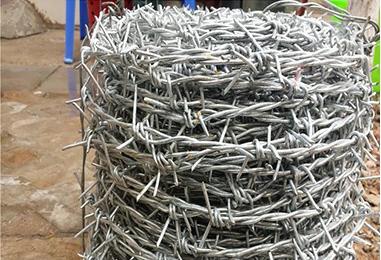 TEL:
+86-13102802206
TEL:
+86-13102802206
 Email:
fencenetting@china.com
Email:
fencenetting@china.com
 Language
Language
 TEL:
+86-13102802206
TEL:
+86-13102802206
 Email:
fencenetting@china.com
Email:
fencenetting@china.com
 Language
Language


The Versatility of Woven Wire Field Fencing
Woven wire field fencing, a robust and versatile option, has become a popular choice for farmers, ranchers, and landowners alike. This type of fencing is characterized by its interlaced wire strands, which form a grid-like structure. Not only does it provide a secure barrier for livestock, but it also serves a variety of applications that extend beyond agriculture.
One of the primary advantages of woven wire field fencing is its durability. Constructed from high-quality galvanized steel or other weather-resistant materials, these fences can withstand the elements, including harsh winds, heavy rains, and intense sun exposure. This resilience ensures that investment in fencing will last for years, reducing the need for frequent replacements. Additionally, the flexibility of woven wire allows it to adapt to various terrain types, making it suitable for hilly, rocky, or flat landscapes.
The Versatility of Woven Wire Field Fencing
Moreover, woven wire field fencing is not just limited to agricultural uses. Its strength and reliability make it ideal for various other applications, such as property boundary demarcation, wildlife exclosures, and even decorative fencing in residential areas. Many homeowners appreciate the rustic aesthetic that woven wire fencing adds to their property, often incorporating it into gardens and yards to delineate spaces while enhancing visual appeal.

Another significant benefit of woven wire fencing is its low maintenance requirement. Compared to traditional wooden fences that may need regular painting, sealing, or replacement due to rotting, woven wire fences are relatively carefree. Occasional inspections and minor adjustments are generally sufficient to keep them in good condition, making them an efficient choice for busy landowners and farmers.
Environmentally, woven wire fencing can also contribute positively. The longevity of these fences means fewer resources are needed for replacements. Additionally, they can serve as a means to manage wildlife populations, enabling landowners to create controlled environments that protect both crops and native species. This aspect is particularly important in areas where agriculture and natural habitats intersect.
Safety is another consideration where woven wire fencing excels. Its robust construction offers a strong barrier against predators that may threaten livestock, such as coyotes or stray dogs. By using this type of fencing, farmers can provide a safer environment for their animals, ensuring that they are protected from potential harm and allowing them to thrive.
In conclusion, woven wire field fencing stands out due to its durability, versatility, and low maintenance requirements. Whether used for agricultural purposes, property demarcation, or aesthetic enhancements, it has proven to be an invaluable asset for landowners. Its ability to adapt to different environments and meet diverse needs makes it a reliable choice for anyone looking to establish a solid barrier while maintaining the integrity of the land and its inhabitants. Investing in woven wire field fencing is not just a pragmatic choice but also a step toward sustainable land management that benefits both people and wildlife.